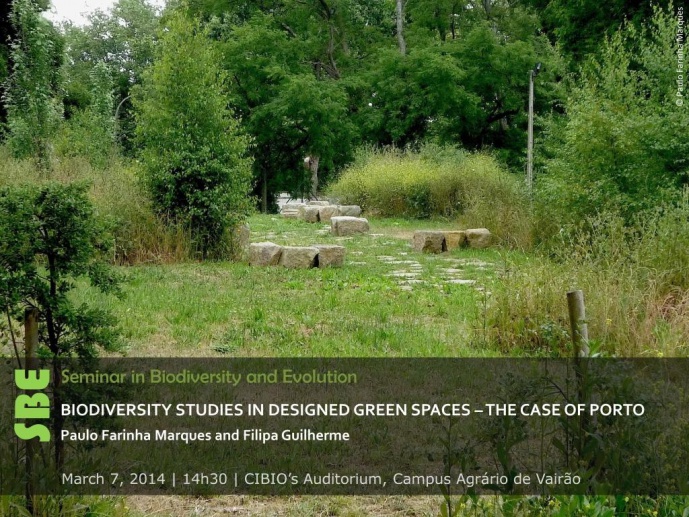BIODIVERSITY STUDIES IN DESIGNED GREEN SPACES – THE CASE OF PORTO


Green structures are vital landscape components for promoting and preserving biodiversity in urban areas or areas. Landscape architects, architects, urban designers and environmental managers should be prepared to develop integrated approaches promoting urban green structures according to current social needs, supported by an in-depth of urban ecosystems. Such approaches must create opportunities for people, plants and animals to coexist in shared public spaces, with as little conflict as possible. A way of achieving these goals is by suitably planning and designing outdoor spaces and landscapes that reflect the development of a green array of multipurpose habitats, access points and facilities with a significant functional, ecological and esthetic quality.
In this regard, it’s important to answer a few questions: What is the relationship between the spatial character of the urban green structure and biodiversity it comprises? How do the organization and design of the space influence the flora and fauna related diversity? What are the spatial strategies and what are the tools that can be used by planners, designers and managers to address the topic of biodiversity in an urban setting? This project takes place in the city of Porto, the heart of a metropolitan area with a population of close to two million. It’s the second largest Portuguese city, with a mild Atlantic climate, a significant variety of natural habitats close to one another (the Douro River and its estuary, the ocean front, streams still with open-air stretches and sloped areas) as well as with various habitats of human origin with different features, dimensions, location and connectivity (parks, gardens, woodlands, residual farming areas, derelict industrial areas and ruderal spaces). Thanks to the city’s geographical, social and environmental context, together with a wide variety of situations, Porto is a very interesting urban area as part of southern Europe, in a transition zone between the temperate and Mediterranean regions. (Farinha-Marques et al., 2011; http://bio-diver-city.fc.up.pt).
Paulo Farinha-Marques is an Associate Professor of Landscape Architecture in the Faculty of Science of the University of Porto – Portugal. He graduated in Landscape Architecture in the Technical University of Lisbon – High Institute of Agronomy (1988) and obtained a PhD in the Faculty of Architectural Studies at the University of Sheffield – UK (1999). Since 1996 he has combined teaching and design practice across scales. His main areas of interest are the planning and design of private and public green structures ecologically, socially and aesthetically integrated (gardens, parks, woodlands) vegetation studies in the landscape, biodiversity studies in the urban context, and landscape character assessment.
Filipa Guilherme is a Biologist, holding a MSc Degree in Conservation Biology by the University of Lisbon, Portugal. Filipa is now working as a researcher on the project “Porto – Public Green Space Morphology and Biodiversity”, in the LPDM Group.
[PI: Paulo Farinha Marques, Landscape Planning, Design and Management]
Image: FCUP Wildlife Garden – Dry south side; Porto, Portugal; (PFM, 2013)